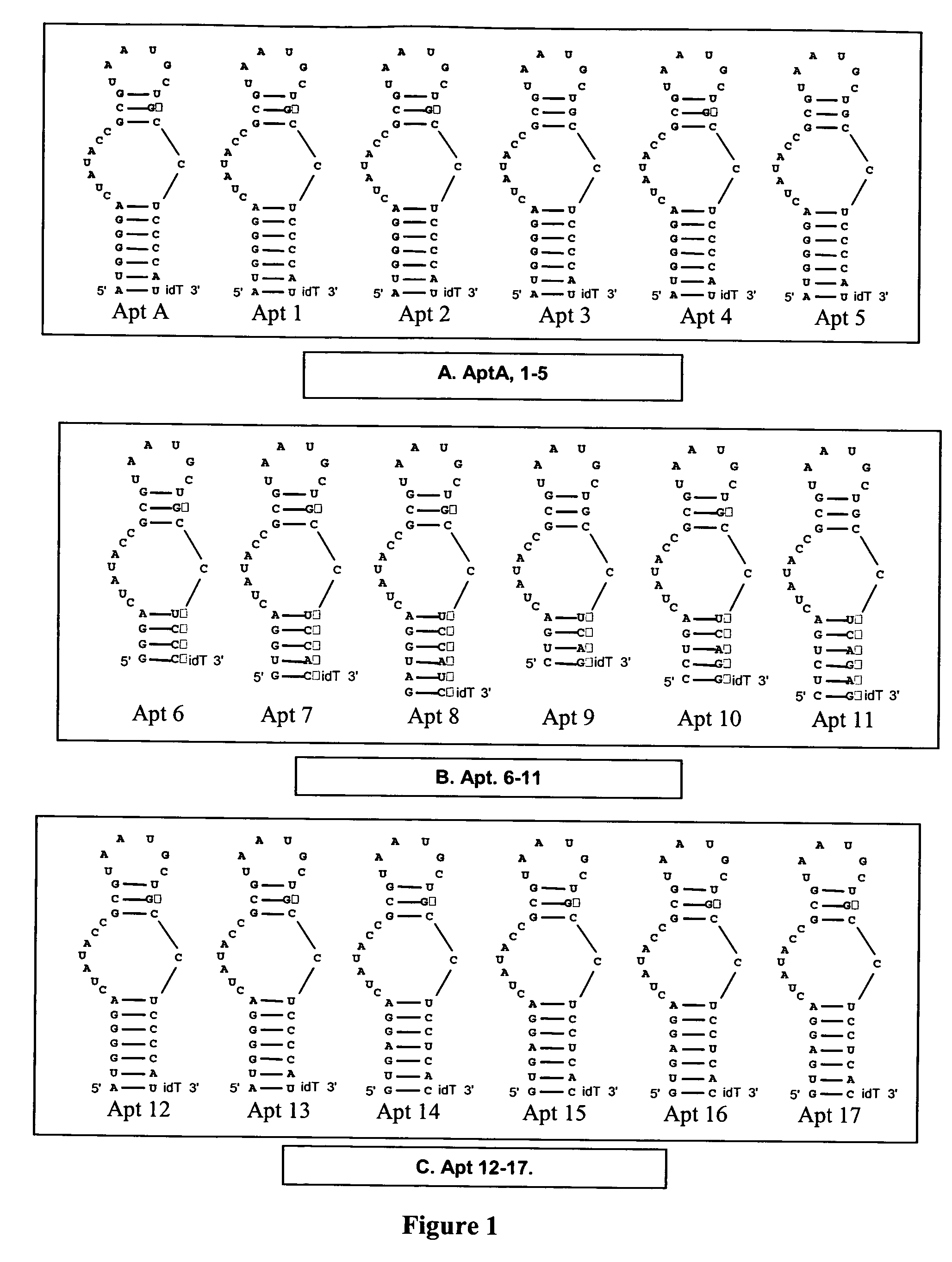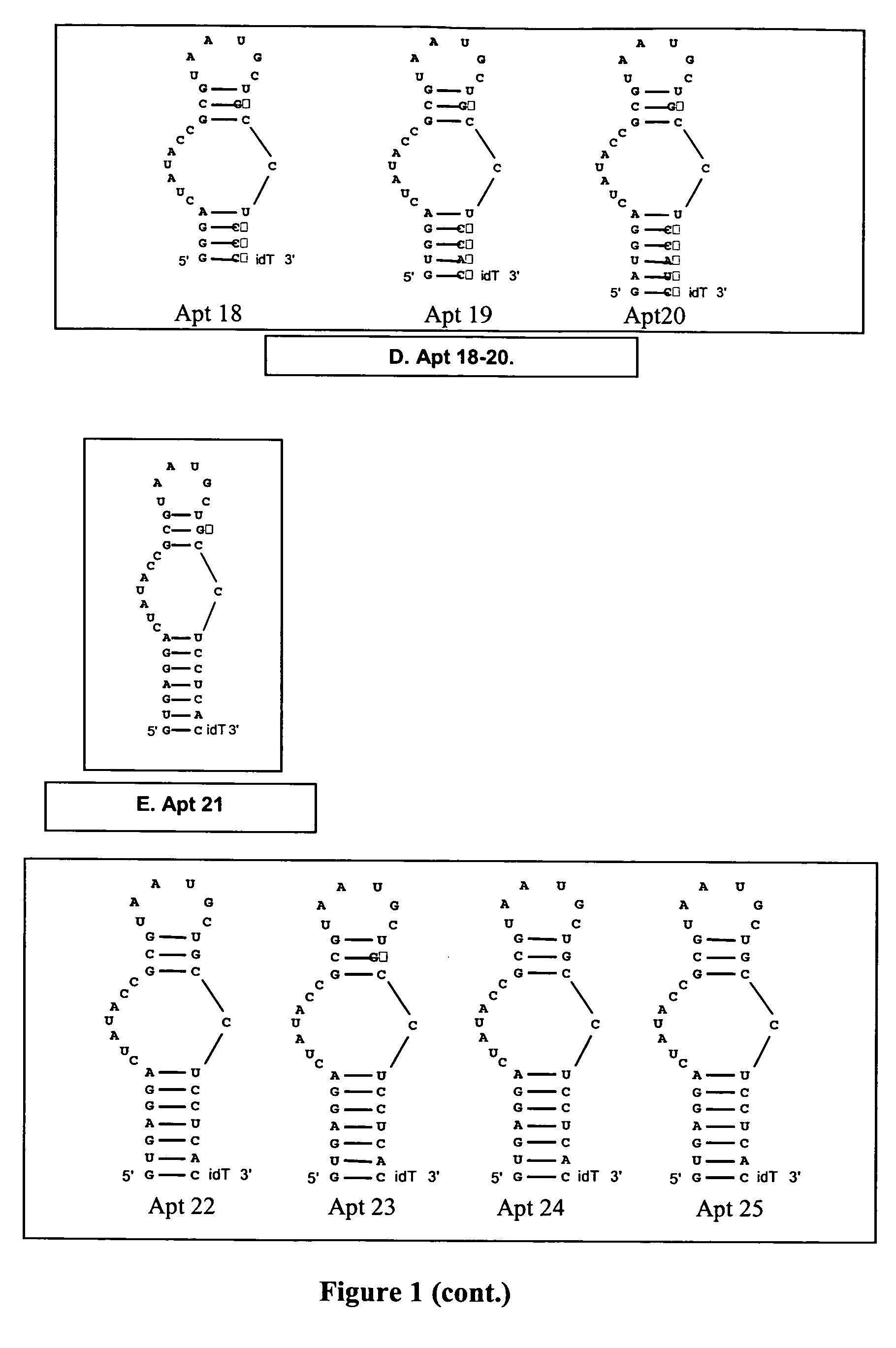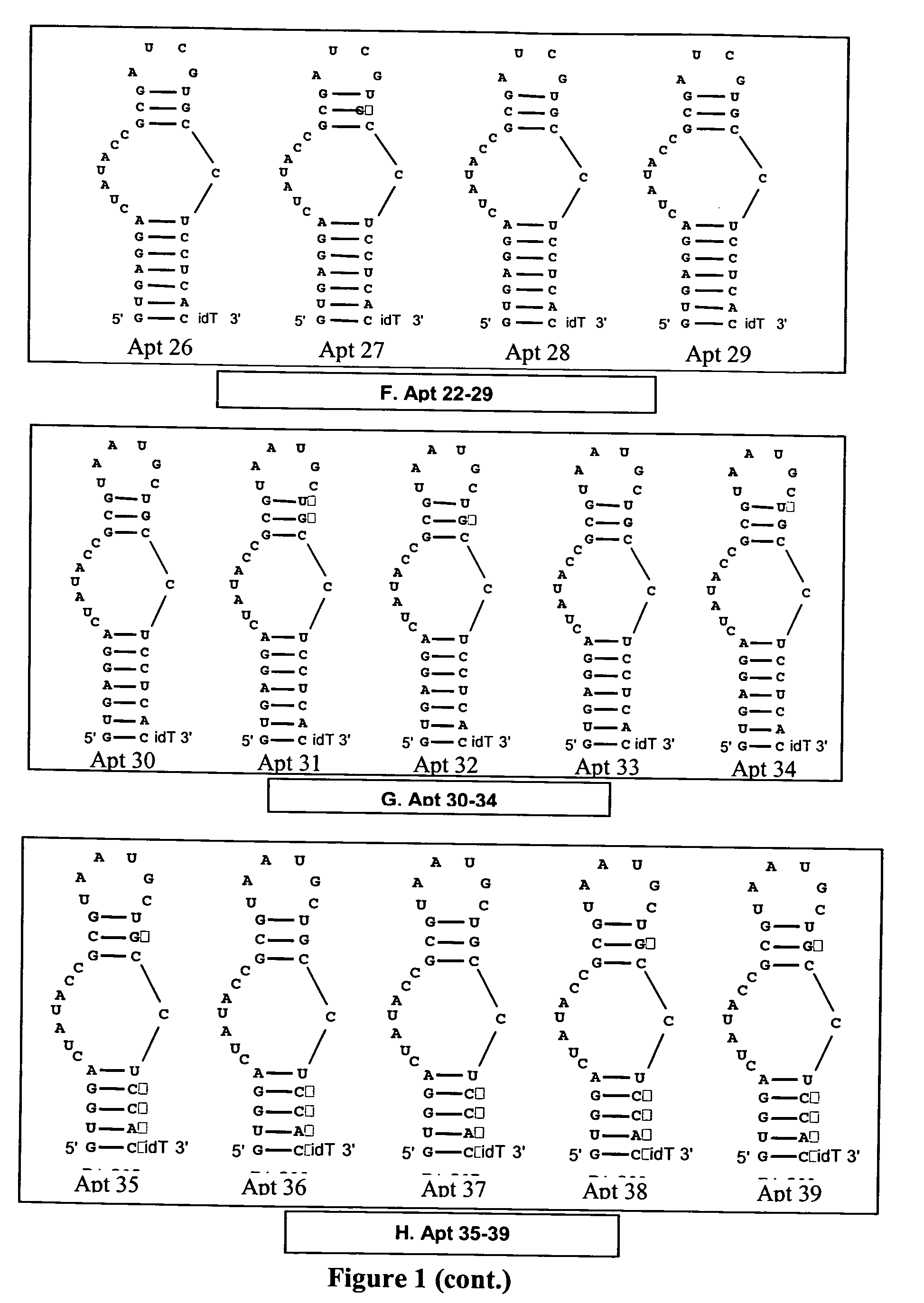Modulators of coagulation factors
a technology of coagulation factor and modulator, which is applied in the field of modulators of coagulation factor, can solve the problems of unrealized use of unmodified rna as a therapeutic agent, no available agent meets the therapeutic endpoints of both bioavailability and efficacy, and the major cause of death of adult populations in developed nations. , to achieve the effect of convenient neutralization and favorable anticoagulant properties
- Summary
- Abstract
- Description
- Claims
- Application Information
AI Technical Summary
Benefits of technology
Problems solved by technology
Method used
Image
Examples
example 1
Substitution of 2′-O-methyl for 2′-hydroxyl sugars in sectors
[0165] 2′-Hydroxyl purines were substituted with 2′-O-methyl purines in the 4 secondary structure units of in which purine residues are present: Stem 1 (Apt 1); Loop 1 (Apt 2); Stem 2 (Apt 3); Loop 2 (Apt 4) (see FIG. 1A).
[0166] Procedure: The anticoagulant activity of AptA derivatives Apt 1-5 was evaluated in standard APTT coagulation assays over compound concentrations ranging from 1 uM to low nanomolar (FIG. 2). The “neutralizability” of Apt1-5 was evaluated in standard APTT antidote assays over AptA antidote concentrations (AptA AD; see sequence listings) ranging from 5 uM and down (FIG. 2). For these assays, the concentration of AptA and derivatives was fixed at 125 nM.
[0167] Apt 4 showed gain of anticoagulant activity (FIG. 2); Apt 1-3 showed moderate loss of activity; and Apt 5 showed severe loss of activity. Apt 1-3 exhibit enhanced neutralization, suggesting that introduction of 2′-O-methyl residues within the ...
example 2
Stem 1 Modifications
[0169] Two “families” of stem 1 variants were designed (Apt 6-8 and 9-11; FIG. 1B) consisting of 4, 5, and 6 basepair stems. All constructs were designed in the Apt-2 background. Stem 1 sequences were evaluated for the ability to design complementary antidote oligonucleotides to them such that the antidotes contain minimal secondary structure, and for the ability of the aptamer to assume the proper secondary structure.
[0170] Stems were wholly 2′-O-methyl modified. Antidote oligonucleotides were designed specific for Apt 6-11 that bind to their respective target aptamer in the same register as AptA AD (see sequence listings below).
[0171] Experiments: The anticoagulant activity of Apt 6-11 was evaluated in standard APTT coagulation assays over compound concentrations ranging from 1 uM to low nanomolar. The antidote control of Apt 6-11 was evaluated in standard APTT antidote assays over antidote concentrations ranging from 5 uM and down. For these assays, the con...
example 4
Reducing Length of Stem 1
[0175] The anticoagulant activity of Apt 18-20 was evaluated in standard APTT coagulation assays over compound concentrations ranging from 1 uM to low nanomolar. The “neutralizability” of Apt 18-20 was evaluated in standard APTT antidote assays over antidote concentrations (Antidote 6, 7 and 8 for 18-20 respectively) ranging from 5 uM and down. The aptamer concentration was fixed at 125 nM in these assays.
[0176] Each of the aptamers (Apt 18-20) is a potent anticoagulant, as or more potent than Apt 2 (FIG. 7). Furthermore, all three are readily neutralized by their respective antidote oligonucleotides. Apt 19 was evaluated for anticoagulant activity of a pegylated version. PEG Apt 19 and, for comparison, PEG-Apt 16 are used (PEG is a 40 KDa polyethylene glycol mPEG2-NHS ester (MW 40 kDa; Nektar / Shearwater 2Z3XOT01), appended to the 5′end via conjugation to a C6 amino linker added to the aptamer during solid phase synthesis). FIG. 8 indicates that the length...
PUM
| Property | Measurement | Unit |
|---|---|---|
| concentrations | aaaaa | aaaaa |
| three dimensional structure | aaaaa | aaaaa |
| nucleic acid | aaaaa | aaaaa |
Abstract
Description
Claims
Application Information
 Login to View More
Login to View More - R&D
- Intellectual Property
- Life Sciences
- Materials
- Tech Scout
- Unparalleled Data Quality
- Higher Quality Content
- 60% Fewer Hallucinations
Browse by: Latest US Patents, China's latest patents, Technical Efficacy Thesaurus, Application Domain, Technology Topic, Popular Technical Reports.
© 2025 PatSnap. All rights reserved.Legal|Privacy policy|Modern Slavery Act Transparency Statement|Sitemap|About US| Contact US: help@patsnap.com



